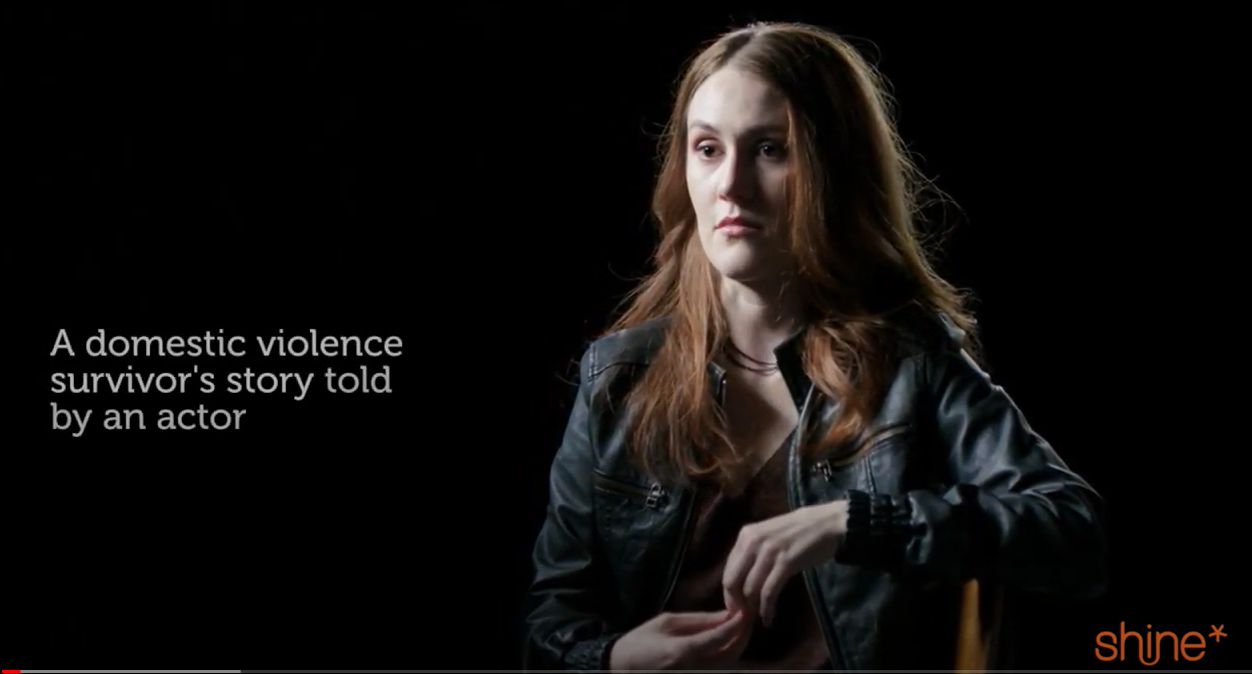Looking for ways to raise awareness about domestic violence in your workplace beyond using Shine’s free online learning module?
Stories can be an excellent way to engage and educate staff, and there are stories you can share from our DVFREE and Shine websites and from Shine’s youtube channel. You are welcome to use our stories – please just acknowledge Shine as the source.
One our DVFREE website, you can find stories about real peoples’ experiences of domestic violence and either helpful or unhelpful responses from their employer. Scroll down to the section with workplace stories on this page.
These are some short videos of actors portraying Shine clients as well as a Shine staff and a volunteer advocate on YouTube. The first one below may be particularly helpful for letting your staff know more about what they can expect if they ring Shine’s Helpline:
- I’m here for you – Shine Helpline team leader
- The shame silences you – Shine client story
- Your mind is not your own – Shine client story
- I tried to stand up to my dad – Shine client story
- Their safety is our priority – Shine volunteer advocate
- Children often inherit blame – KIDshine advocate
You may want to keep an eye on Shine’s Facebook page as we share stories from time to time here.
There are many good stories and videos about family violence with good messages and hope for change and healing. Just a few examples include:
Ted Talk by Matt Brown ‘The Barber’ in Christchurch
‘A Call to Men’ Ted Talk by Tony Porter, in the USA
Ministry of Justice ‘Talking about Family Violence’ series
Sharing stories of your own people
It can be very powerful to share stories from your own employees if there are people willing to share their own story to help raise awareness and understanding. However, there are important privacy and safety issues to consider. We recommend:
- Ask if their story can be shared without using their name or identifying them in any way, and make sure they know there is no pressure on them to share their story and they can say no and no explanation is necessary
- Before asking them, you may want to consider having a policy or stance that your organization will only share stories about employee’s experience of domestic violence anonymously. If the employee wants to share their story using their name, it is important to consider whether this poses any risk to the employee’s safety, as it then is also a risk for your organization. Shine’s policy is to share client stories anonymously unless the client wants to be named and we believe there is absolutely no risk to them, their children or anyone else of going public – e.g. their abuser is living overseas, is in prison or has passed away.
- If they say yes, change their name and enough detail in the story so that someone who knows them would not know it was about that person, e.g. their ethnicity, age, and/or ethnicity, ages, and genders of their children, etc. Let the employee read the edited version of the story and have control over how their details are changed and whether the changes are sufficient for anonymity.
A good example of this is in this opinion editorial written by Ali Mau that includes the story of a Stuff employee. Link here.
Finally, if the story you share describes physical violence or a traumatic event, it is always a good idea to include a ‘trigger warning’ at the beginning of the story that warns readers about the content. This is especially helpful for people recovering from their own experiences of trauma who want to avoid being triggered.
